Mike Jastrzebski's Blog, page 85
July 28, 2011
A Fine Line
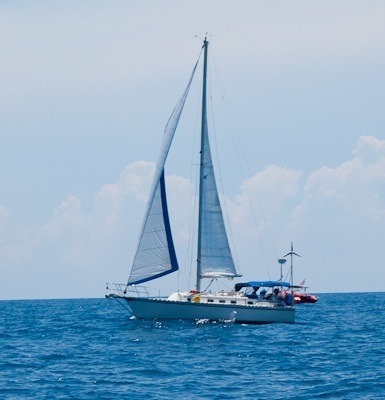 There is a fine line between absolute brilliance and total crap.
There is a fine line between absolute brilliance and total crap.
You don't think so? Well, listen up. Here's my theory. It is the nature of this species we call human to be imperfect. In other words, we all screw up at one time or another. Even the most brilliant human being will screw up. And those of us who are not so brilliant tend to do it a lot.
And you are absolutely guaranteed to do some really stupid stuff as soon as you puff up your chest and start trotting around like a peacock thinking that you personify the brilliance end of this spectrum. Right?
Here's what happened. When I was sailing in the Abaco Regatta, my friend Matt introduced me as someone who had circumnavigated. Now that's total crap. I haven't. But I did sail to New Zealand and back many years ago. So I said, "No, I've only sailed to New Zealand." Did you hear it? It was there in how I said the word ONLY. That peacock was peeking out.
So, those of you who have read this blog these past few weeks know that I wrote about the pseudonymous BUDDY BOAT. I said they didn't know what they were doing while I (puff out tail feathers) am an experienced sailor. I have sailed to New Zealand and back.
I should have known to duck at that point. Karma was going to rise up and smack me up the side of the head. And it has.
I have become the Buddy Boat.
Seriously.
While I was in the marina at Merritt Island for a week, I tried to do all the maintenance I needed to do from figuring out my battery issues (another duh! moment when a friend pointed out that the breaker on my batteries was the problem) to repairing my autopilot, to fixing my running lights. Then I contacted my dear friend on WILD MATILDA, a Ron Holland 43, who was also heading for Charleston, and we set up a rendezvous point just north of Cape Canaveral for last Friday. In order to arrive at the waypoint on time, I had to get through a bridge before 6:00 a.m. when it started the rush-hour-curfew. But I overslept when the battery on my alarm died overnight. I started the day off two and a half hours late.
Then once I got through the Port Canaveral lock and bridges, and made it out off shore, my engine overheated. I had failed to check my raw water strainer before leaving the Barge Canal. I met up with WILD MATILDA, but he was always having to slow down for my little boat. In the morning, my fuel filters clogged and I had to change fuel filters in a roiling nasty sea. Then late that afternoon, we got 15-20 knots of wind over the stern and my poor little wheel autopilot, the Autohelm 4000, even with the new belt I had installed in Port Canaveral, could not handle the 3-4 foot following seas while motorsailing and I was back to hand steering again. As I watched WILD MATILDA grow smaller as she pulled ahead and my arms were aching again, I was back there hollering, "Damn you, Big Boat People! You're up there relaxing with your feet up and listening to your audio book, and I'm back here living an episode of Survivor!"
Finally, we rounded the breakwater at Charleston Saturday night around 8:30 p.m., and as we poked our way into the harbor, I was trying to steer my boat with one hand while holding the iPad with the other looking like the Chinese plate spinner at the Circus. When I dropped my main, I lost WILD MATILDA's stern light in the lights of the city.
My VHF handheld battery had died, so I had to engage the autopilot and run down below to call and wail "I've lost you!" Like I said — I'd become the Buudy Boat.
But the real coup de grace came when we came into the Charleston Maritime Center docks on Sunday morning and WILD MATILDA's captain told me that there had been something strange about my running lights. I went below to turn them on and see if we could sort out the problem. When I returned to the dock he was laughing.
"Don't you see it?"
"What?" I asked.
"They're backwards. Red should be to port."
When I had taken the red/green lens off to clean the contacts on my bow light, I had replaced the lens upside down. That meant I had just sailed past ships and traffic for 300 miles offshore with my running lights backwards.
As I said, it's a fine line between total brilliance and absolute crap. There was no question which side of the line this little stinker fell on.
For once I'm not going to belabor the metaphor. If you are a writer, I think you've seen it already.
So tonight it is Wednesday, July 27th, and I am about to go to sleep because WILD MATILDA and TALESPINNER are due to depart at 3:00 a.m. for the next leg to Beaufort, NC. We hope to arrive Friday evening before dark. You can follow our progress on my SPOT page here and let me know which side of the line you think I'd treading on this next leg.
Fair winds!
Christine
Share on Facebook
Write On The Water work guidelines…
C.E. Grundler
I'd like to thank Mike for covering for me last week. Aside from a single root-canal twenty years ago, my teeth and I have gotten along fairly well. Unfortunately that old root-canal decided to abscess in the most painful way, leading to some unpleasant complications that landed me in the emergency room and then the oral surgeon's office. All is better now, but it certainly knocked me off my feet for a few days. And, in an odd way, it ties into the post I never managed to complete for last Thursday: the Write On The Water work environment.
It wasn't all that long ago when my wardrobe fell into two distinct categories: office clothes and boat clothes. Half my closet consisted of tidy black skirts and button-down blouses, blazers and slacks. An organizer hung from inside the door with compartments for a number of pumps and other 'work' shoes. On the opposite end of the spectrum were the clothes I spent my non-nine-to-five hours in: worn cargo pants and jeans, cut-offs, tank tops, tee-shirts with speckles of dried paint and epoxy, LL Bean boots, beat-up Docksiders and a pair of scuffed up sandals. At times the office clothes might see the boat, if only for a moment before I hastily changed into something more appropriate, but the boat clothes NEVER saw the office. But the other day I realized I hadn't even gone into one half of my closet in months, and that made me smile. I definitely like the dress code here at my new job over the old one.
And that led me to thinking about the employee handbook that once ruled my days. Every detail of office life was spelled out with specific guidelines, from vacation and sick time to appropriate behavior and dress. I began to consider what a Write On The Water Writer's Handbook might contain, relevant to our particular work environment. This is just a rough idea; if you have anything to add please feel free to speak up.
ANTI-DISCRIMINATION POLICIES:
Write On The Water (WOW) prohibits discrimination based upon race, religion, sex, or preference for power or sail. In addition, all writers are free to follow their choice of publishing, be it traditional or independent.
WORK SCHEDULES:
WOW writers are expected to keep whatever schedules they deem suitable for managing to meet their personal goals for word counts, while at the same time attending to whatever parts aboard their boat that have chosen the least convenient moment to snap, rip, leak, seize or otherwise follow the laws set forth by Murphy.
Time off for vacation, holiday, sick days or any other reason are all at the writer's discretion. The writer is permitted to take as many days off as often as needed, without having to answer to any manager or supervisor. In the event, however, that a writer is unable to post on their assigned posting day, please be sure to contact another of your fellow writers and arrange coverage so readers can continue to enjoy new content.
DRESS CODE:
The following list is a guideline of what attire is appropriate and inappropriate for WOW writers.
APPROPRIATE
Shorts, cut offs
Flip-flops
T-shirts
Tank tops
Boat shoes
Denim jeans, preferably faded and/or ripped
Paint stained sweatshirts
INAPPROPRIATE
Dress shirts
Suits
Formal office attire
Heels or hard-soled dress shoes
WOW does not endorse casual Fridays. All days of the week are considered equally casual and writers may spend as much time as they see fit writing in their bathrobes or similar attire if they so desire.
WORKPLACE VIOLENCE:
Any physical assault, threatening behavior, or verbal abuse makes for lively mystery fiction. If you are writing within this genre, the violence you may utilize can include but is not limited to: Physical assaults; Beatings/stabbings; Shootings; Attempting to cause physical harm, (i.e., striking, pushing, or other aggressive acts against another person); and verbal threats of harm either actual or implied. Be imaginative!
BENEFITS:
Writers for WOW have the option to view sunrises and sunsets at their leisure, free from the concern that they should be commuting to or from some dreary cubicle. WOW writers may enjoy a workplace that is free of the stress and anxiety caused by unrealistically demanding bosses, lazy co-workers, pointless water-cooler gossip, downsizing, increased workloads and impossible goals. WOW writers may sail to beautiful locations and visit the area's beaches and pubs, observing the locals, all under the heading of research. Writers may disregard everything stated here if, however, they find these conflicts with their normal mode of operation.
All WOW writers are encouraged to expand upon this list with any other guidelines they would like to see included.
Share on Facebook
July 26, 2011
Writers, Readers, and Responders

God damn it! Why don't you respond?
In his exasperation in trying to communicate with my brother and I at one point in my life, my father took to playing our game. He stopped trying to engage us either. The only way he would communicate was by holding up cue cards with written questions or phrases. He had a dozen or such cards such as "What would you like for breakfast?" or "Hello."
After trying to engage people for a couple years now through writing, I know how he felt. You keep pushing out information and can tell via online tracking numbers, etcetera that people are reading your content. Why is there then no response? You question the quality of your work. You try techniques such as asking questions in your writing to draw in and nurture comments.
I have come to the point where I wonder if there are too many writers, plenty of readers, but a dearth of responders. And who am I to complain? I hardly ever comment on blogs or review books. I am the worst reader out there, hiding in the corner of blogs, forming opinions, and never sharing them. It is certainly my right to do so, but I sure should not complain about other acting the same when they read my articles.
So I am trying to learn how to respond. If you have a blog that never gets comments or a book that needs a review, my goal is to be that comment you have always dreamed of having. I will comment with a compliment of your writing and a depth that shows I have read your article. Here is a review of Mike's Storm Killer which has 12 other reviewers so did not really need my attention.
My father never did get us to respond and eventually gave up his cue cards and went back to yelling at us. He just wanted a response, that "hello" in the morning which is sometimes so hard to get.
Please feel free to say hello to me over on my blog, Waves.
Share on Facebook
July 25, 2011
What's the Best Liveaboard Boat? Three Things to Consider
by Tom Tripp

The Motor Yacht Lady Star -- Photo by her owners
I thought this might be a natural conversation-starter here on Write on the Water, since some of the authors and many of the readers are actual liveaboards. The title is a bit misleading, since obviously there is no single "best" liveaboard boat for all the different kinds of folks who would consider the lifestyle. So maybe what we're really talking about is, "How do I make the best decision about which boat to live aboard?"
That, it seems, might be a bit easier to answer by using a simple 3-step checklist.
Use of the Boat – How will you actually use the boat? A large percentage of liveaboards never, or rarely, leave their moorings. They talk about cruising, make plans and preparations, but never actually seem to go. And there's nothing wrong with that, except that many of them purchased a boat to cruise aboard and probably would have bought a different boat if they knew they were really looking for a dock queen.
So, be brutally honest with yourself about what you're really going to do with your boat. Do you really need a true bluewater passagemaker? Exceedingly few people ever actually cross oceans in their yachts. You might be one of them, but ask the question anyway. Maybe a good coastal cruiser is a better fit. Perhaps your cruising ambitions don't include oceans at all. A Great Circle cruise in the United States wouldn't necessarily require a boat capable of withstanding heavy seas.
What about sail vs. power? Many liveaboards on a tight budget have chosen smaller sailboats because of the generally simpler and less expensive equipment. That advantage in cost may be more of a perception than a reality if your sailboat isn't well-founded and equipped with up-to-date systems. And if you want to bring many of the lubberly luxuries aboard, you may find yourself having to install a generator and AC electrical system; both often found more standard on dedicated power-cruising boats.
Even within the two propulsion categories there are choices to be made. If your sailboat is to be navigated mainly in tropical island-hopping mode – The Bahamas, for example – you'll need a shoal draft that allows you to get into more bays and coves. If your power cruiser is meant to cross large expanses of blue water, will you rely on a wing engine or perhaps a Power TakeOff (PTO) from the main powerplant or a hydraulic motor for an emergency backup? Maybe you'll have twins instead.
The important thing here is that you need to start with the general question of how your boat will be used and then move deliberately down through the decision trees that will result. Go through the process more than once, and after you've been aboard many different kinds of candidate boats. You may be surprised at how your priorities seem to change.
Budget — How much to spend on your new floating home is the second most important decision process. If you have and know your absolute limits in terms of the amount of money you have to spend for the boat and related expenditures, then you can use that as a filter when you go through the "Use of the Boat" evaluation. That process may push you to move your budget in one direction or the other a little bit as you settle on your priorities.
It may sound obvious, but don't forget that purchase price is only part of the financial equation, and might be the most transparent. How much more money will it take to bring your new boat (or "new to you" boat) up to a standard that meets your "use" requirement. The answer is usually, "more than you planned for." So plan for more than you think. Pre-purchase surveys can do a good job of starting to identify that financial commitment, but won't uncover everything you need to fix, change or add.
Other areas that can significantly affect your budget include whether you plan to keep the boat on a mooring ball, tied to a dock, or up on the hard when you're not using it. Add to those costs the price of care and storage if you're not living aboard full time. Every boater since Noah has tried to estimate and budget for maintenance and overhaul costs and as far as I can tell, none have really succeeded. You may have heard the old "10% rule" that suggested that amount of the purchase price would be needed for operation and maintenance of a boat. Some say that applies to new boats only and doesn't really include reserves needed for major overhauls and replacement of key systems. In any event, you can get some estimates from others with identical or similar boats – check online discussion forums for good leads.
Reconsider — Finally, when you've settled on a "true use" of your boat and a budget for its acquisition and ongoing ownership, reconsider all of it. Have you really considered what it will mean to downsize your lifestyle and material possessions to fit into your new (and inevitably smaller) home? How about all your books? Readers and writers on this blog in particular have talked about how hard that task is.
Are you planning on doing all the major maintenance yourself? Many do but few have the hands-on experience with diesel, electrical and hydraulic systems to really be self-sufficient. It's not that you can't reach that status, but it might be a fairly costly road to get there.
There are some great online resources to help you consider these issues, and others, in more depth. In addition to some of the posts on living aboard by our own writers here, here and here, check out:
– The sailing vessel Bella Rose.
– The sailing vessel Terratima.
– The discussion forums at the Livingaboard website.
Lastly, I'm hoping all of those of you who already live aboard will chime in with your own views on the most important considerations when making the decision to move aboard your boat. Please let us know in the comments.
Share on Facebook
July 24, 2011
Ten steps to becoming a successful self-published author.
By Mike Jastrzebski
I am not one of the top eBook sellers out there, but in the past twelve months I've sold over 9500 eBooks. The following ten items are the top things I did that I feel have contributed to my sales.
1) First and foremost, write a good book. If your book is poorly written, chances are the word will spread.
2) Make sure the book is well edited and well formatted. Again, word will spread if it's not.
3) The first thing you need to do if you have not done so already is to set up a website. On your site you need to mention your books. You need to have links to the various sites that sell your books. You need to tell the reader something about yourself. And finally, you need to have a means for the reader to contact you. My website is http://www.mikejastrzebski.com/.
4) You need to have a blog. When you blog you should write as carefully as you would your next novel, and you need to write regularly if you want to establish a following. I blog on Mondays at http://www.writeonthewater.com/.
5) You need a vibrant, professional cover. I use Vicki Landis. Her e-mail is bookpainter319@hotmail.com. You can see all of my covers at the bottom of this post.
6) Write a good blurb for you book.
7) Price your book reasonably. Most self-published books that are doing well are priced between .99 cents and $2.99.
8) Promote your books through Facebook, Goodreads, Twitter and other social networking sites, but don't be a pest. People get tired of being sold. I do announce when I have a new book coming out, but I also try to offer the reader something. Most of my posts are links from my blog and I post about things that I hope will help other writers succeed. We're all in this together and I think there's room for many to succeed.
9) Advertise with care. I have tried several advertising sites and the only one that I have found repeated success with is the Kindle Nation Daily blog. They are not inexpensive, but I have always seen a big enough increase in sales to more than pay for the ad.
10) Write. This probably should be number one on the list, but I left it for last as a reminder. If you don't have anything new to sell, your sales are never going to be where you want them to be. I have two books out right now, Key Lime Blues (A Wes Darling Mystery), and The Storm Killer . My third novel, Dog River Blues, will be available at the beginning of August. I truly believe that the more books you have published the more of each book you will sell as readers find you and look for your other books. Good Luck.
. My third novel, Dog River Blues, will be available at the beginning of August. I truly believe that the more books you have published the more of each book you will sell as readers find you and look for your other books. Good Luck.
All of my covers are done by Vicki Landis
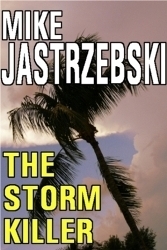
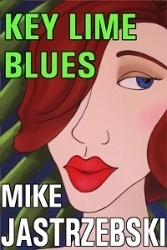
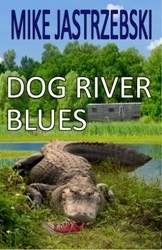
Share on Facebook
July 21, 2011
Today's guest Carol Newman Cronin explains why E-Publishing is the E-asy Part
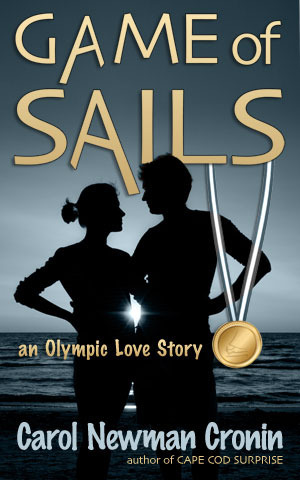 By the time you read this blog, I (Christine) will be several miles into the next leg of my voyage from Port Canaveral to Charleston. So, it is with great pleasure that I welcome back today's guest writer on the water, Carol Newman Cronin, Olympic sailor, author, contributing writer and editor for several boating publications. Her most recent novel is Game of Sails: an Olympic Love Story. Read to the end of Carol's post to learn how to get a free ebook coupon.
By the time you read this blog, I (Christine) will be several miles into the next leg of my voyage from Port Canaveral to Charleston. So, it is with great pleasure that I welcome back today's guest writer on the water, Carol Newman Cronin, Olympic sailor, author, contributing writer and editor for several boating publications. Her most recent novel is Game of Sails: an Olympic Love Story. Read to the end of Carol's post to learn how to get a free ebook coupon.
E-Publishing is the E-asy Part
One year after my second book Cape Cod Surprise was published by a small press, it was time to push Game of Sails: an Olympic Love Story out of the nest.
This is the story that just wouldn't let go. Since I first got to know the two main characters back in 1994, it has demanded to be written and then begged to be finished. It grew fussy when I set it aside to publish two books in the Oliver series. And then last winter, it insisted that with just a little more tweaking, it would be ready for its world debut—which must, must, MUST take place before the 2012 Olympics. It didn't care if it sat between two gilded hardback covers or existed as pure pixels, but it wanted to be out in the world—not sitting on my hard disk.
And since I've been letting this story push me around for almost seventeen years, I took the time and energy I'd been devoting to an agent search and instead educated myself about ebook publishing. I quickly discovered Smashwords, a free publishing service that offers an easy-to-follow style guide and great technical support.
I also rediscovered the self-confidence of controlling my own publishing destiny.
Using my graphic design skills, I created my own cover—though it took two tries to get it right. The hardest thing about formatting the text was working exclusively in Word, which has never been my favorite program. I also had to stop myself from getting too fancy. No drop caps, no big chapter numbers. Just a story.
Within a week of my final decision to e-publish, I had uploaded a book that was available in all the common ereader formats. Best of all, before I'd even shared the news with anyone, two downloads were reported.
Now just a few weeks later, after only a few Facebook posts and one group email, 35 copies have already been downloaded from various sites. Last Friday I heard from two different people: "Your book kept me up reading last night!" One competitor even accused me of maliciously timing the release to make it easier to win the weekend regatta—my best compliment to date. And a non-sailing friend posted the following in an Amazon review: "Casey and Spencer are so believable I half expect to run into them at the grocery store."
But now that Game of Sails has finally left the nest, how do I teach it to fly?
I know the hard work has just begun. But how perfectly wonderful to share my story with readers, and then almost instantly find out that they enjoyed it enough to lose sleep over it.
Have an idea about how to market Game of Sails, or a prediction of where it will take me next? Share your thoughts, and I'll send the best 3 commenters a coupon for a free download.
 Carol Newman Cronin
has sailed and written fiction since she was a child. In 2004, she crowned a lifetime of competitive achievement by winning two races for the USA at the Olympics. A member of the elite US Sailing Team from 2001–2007, she has won numerous national and international sailing championships. Since retiring from Olympic sailing, Carol has focused on writing and graphic design from her home office in Jamestown, RI. She and her husband spend as many hours as possible on the water. Follow her blog, Where Books Meet Boats.
Carol Newman Cronin
has sailed and written fiction since she was a child. In 2004, she crowned a lifetime of competitive achievement by winning two races for the USA at the Olympics. A member of the elite US Sailing Team from 2001–2007, she has won numerous national and international sailing championships. Since retiring from Olympic sailing, Carol has focused on writing and graphic design from her home office in Jamestown, RI. She and her husband spend as many hours as possible on the water. Follow her blog, Where Books Meet Boats.
Share on Facebook
Wes Darling on the Dog River
C.E. is ill today and since my new Dog River Blues will be out early next month, I thought I'd throw up some pictures of what my charactor, Wes Darling, would have seen while he was running around in Alabama.
Dog River
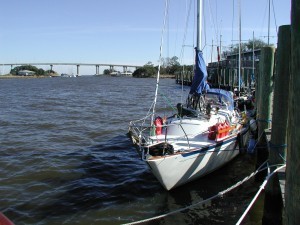
The Bayous
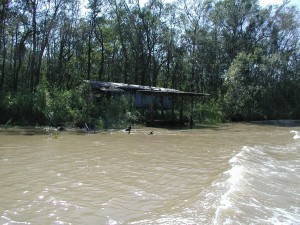
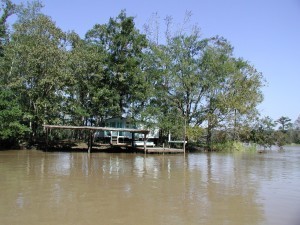
Share on Facebook
July 19, 2011
Lost Among The Crabs
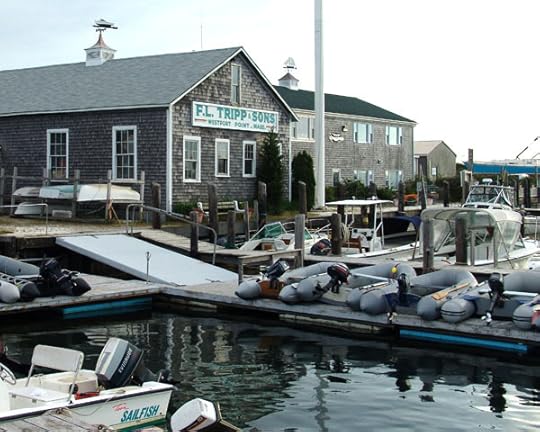
(Westport photo courtesy of the MV Knotty Dog)
I've attended enough writers' conferences to know that I am not alone in needing glasses to practice my craft. Without my Rx lenses, I can't write. Given this, you'd think I'd take better care of these spectacles.
After four years, my reading glasses bore scratches, bent rims, and an out-of-date prescription. But damn they were trusty. They'd fallen onto concrete floors from heights, gotten crushed, and been dropped into several colors of boat paint. Still, I'd put them on and the written word opened up to me as a reader, writer, and peruser of words. Unfortunately, this all changed last Saturday.
Following a downpour from the evening before, I stopped by the dinghy dock to drain our tender. The inflatables were lined up shoulder to shoulder so I leaned over the little boat to unscrew the transom drain plug. I leaned down, stretched over the edge of the dock and…plunk. Those old reliable glasses slipped from my shirt pocket in one smooth motion and glided into the drink, doing something akin to a swan dive in the process. Damn.
I leaned over the dinghy, my legs now behind me spread-eagle, my head lowered to water level, and I tried to spot my trusty readers. The tide was low and the water clear but I couldn't see them. Being the persistent sort, I spent the next twenty minutes doing my damnedest.
I can imagine the comments on the dock: "Son, grab my fishing rod, he must have spotted a big one." Or maybe, "Look at that, flat calm and he still lost his lunch." More likely, nobody saw me in my foolish unproductive stance. I'm not so sure about the next day, though. I was back with my mask, snorkel, and continued perseverance.
There are probably better places to snorkel than a busy dinghy dock, but those glasses are required for my livelihood. My writing, too. Splash. There I was. Face down. Spread-eagle again, but this time on the water's surface. I cleared the lens of my mask and focused. Holy crap were there a lot of crabs. Spider crabs, I believe. Everywhere and more than a few that seemed to be looking at me. And even more seemed to be involved in some kind of battle…or some other activity of nature. But my glasses? Nope. Carried by the current. Or maybe consumed by crustaceans.

(The Old Reliables this past winter, on loan to Comet.)
On Monday morning I was sitting at my desk wearing my prescription sunglasses, waiting for a colleague to ask if I was imitating Jack Nicholson. With speed, Lens Crafters analyzed my eyes and set me up with a new pair of specs.
The result? All is good. This time, they will stay in their box when not used. This time, I'll have them on a neck lanyard when I am on the water. And next time? Next time I'm leaving the spider crabs to their own.
Share on Facebook
Hemingway Days in Key West
Write on the Water
If you take the time to read the below, you will see that I am one of three authors to participate in this year's Hemingway Days in Key West. While most of the event is built around Hemingway's favorite waterhole – Sloppy Joes – there are a few literary events.
When Hemingway was alive, mystery writers were pulp fiction writers, not literary writers – whatever they are, or were. Today, mystery writers appear on the bestseller list of the NY Times and other newspapers. So I guess it's okay that my friend Tom Corcoran and I are included in this year's event – of course, Tom has been included for years. I must confess, with a little embarrassment that I am not familiar with Mark Childress, but his book titles ring a bell.
If you are around the Keys mid-week, please stop in Wednesday night and say hi. If they put up a revival tent in Key West, Tom Corcoran could fill it.
Hemingway Days in Key West
KEY WEST, Florida Keys — The flourishing Key West literary community that dates back to Ernest Hemingway's 10-year residence is to be celebrated July 19-24 during Hemingway Days 2011. Literary highlights include the culmination of the Lorian Hemingway Short Story Competition, directed by author and Hemingway granddaughter Lorian Hemingway, and other events honoring Ernest's creative legacy and the talents of contemporary writers.
The literary schedule begins at 5:30 p.m. Tuesday, July 19, with the U.S. book debut party for "The Key West Bucket List" at The Porch, 429 Caroline St. Penned by David Sloan, the volume offers entertaining suggestions for "must-do" activities in Key West and the Keys. Sloan's other writing credits include co-authoring "Quit Your Job and Move to Key West."
At 8 p.m. Wednesday Lorian Hemingway, whose critically acclaimed books include the powerful "A World Turned Over" and "Walk on Water," is to lead other renowned writers in an evening of readings. Hosted by Wyland Galleries of Key West, "Voices, Places, Inspirations" takes place at 623 Duval St.
Scheduled participants are Mark Childress, author of the bestselling novel "Crazy in Alabama" and recent sensation "Georgia Bottoms," among others; Tom Corcoran, noted for his Key West-based Alex Rutledge mysteries and compelling photography book "Key West in Black and White," and Michael Haskins, whose Mad Mick Murphy mysteries include "Chasin' the Wind" and "Free Range Institution."
Hemingway Days' literary highlight is Lorian Hemingway's announcement of the winners of her internationally recognized contest for emerging writers of short fiction. The awards reception is set for 8 p.m. Friday, July 22, at Casa Antigua, 314 Simonton St., Ernest Hemingway's first Key West address.
A reading of the winning story and a Casa Antigua history presentation by owner Tom Oosterhoudt round out the evening.
Share on Facebook
July 17, 2011
Agent Joyce Holland: Win a critique of the first page of your manuscript.
I am turning over my Monday slot to Joyce Holland who has a great offer for writers who are looking for an agent.–Mike Jastrzebski
By Joyce Holland
It's been quite a while since I've written anything here. I really have been swamped with agency submissions, plus Tony and I took some time out this summer to do a bit of traveling. Unfortunately, we didn't go by boat. We had a short window of opportunity in which to drive from Florida to Canada and back. As always, we spent a large block of our month away in NYC. I do love The City. It's such an exciting place for me. It helps that Tony grew up there and his brother still lives in Manhattan. It's magical.
Anyway, now that I'm back home, I find myself yearning to write more and more each day, but never manage to set aside the time. I spend my nights reading manuscripts on my iPad, and my days responding to them.
Back in April I was asked to talk to a group on the basics of submitting to an agent or editor. A few years ago I might have suggested tight guidelines on what or what not to do. Unfortunately I said what was expected of me, but now I'm sorry I did. You know why? Because in the last two years I have seen it all, every imaginable attention getter you can dream of. And the only thing that works is still a thrilling opening, whether it's in the
query or the manuscript itself. If you can wow them with an opening paragraph, they will read manuscripts with justified margins, stupid looking font and just about anything else you can do to screw up a submission. I'm serious, if the opening lines impress me, I charge on, hoping to find a story that shows promise of being a best seller. I'm not kidding, Margins and fonts can be fixed in a heartbeat, lousy story telling, passive prose and tedious
descriptions, and (particularly) slow beginnings, cannot. They are a sure sign of worse things to come.
Writers who make something happen early on, who engage the reader by making them want to know what will happen next, those are what we are all looking for when we open a book or turn on our eReaders. We all know enough to put some action in the cover blurb if we want to draw readers inside. Think of your first page the same way. Make it exciting. I've read queries that show great promise, then relax and start the book out with background. I'm not talking prologues here, I happen to like them it they're exciting, I'm taking character driven action in scene one. Scare me, shock me, make me cry. Having
said all that, I wish I could do it myself. Anyone want to be in a first page contest? I'll take the first 25 who send them to me. I'll put the winning entry here on my blog. And I'll promise to consider the book it's going to open, even if it's not written yet. Rules. No more than 350 words. Put the entry in the body of an email. Deadline: noon, on August 15th. Central Time Zone. Address it to: joyce@d4eo.com
Share on Facebook



